Stoke’s Forgotten Landmarks: What’s Next for the City’s Derelict Buildings?
Martin Poyntz-Roberts shines a light on the future of the city's abandoned spaces, including an old flint mill in Burslem that's being bought back to life…
Full disclosure from the start; I am not from Stoke-on-Trent. I hadn’t even been to Stoke until 2010, when I first drove through the city with my future wife and I can still remember it clearly. I was driving along the A500, approaching the Etruria roundabout and on my right, Twyford House came into view. At least 50 per cent of the windows were broken. ‘What’s that?’ I asked, and recall being told a very brief history of Stoke. After that, I was hooked.
The first impression you have of a city can shape your view, but having lived in large cities for most of my adult life, I was more captivated by what I saw left abandoned and unloved. There were clear signs that this was a city that had a past, a reason for existing, and judging by the scale of the other derelict buildings that I witnessed, it’s a city with a soul, a character, and a personality. But it’s also a city that looks knackered and, dare I say, neglected. This may or may not be true, but that’s just the feeling I got, and it’s stuck with me over the seven years I’ve lived here.
So across the next few months, I’ll be exploring the rich heritage within the six towns that make up this city. It’s a city where things are happening, but like most vibrant cities, you have to scratch below the surface to find the real heart of what’s happening. The old potbanks in a city that was once home to more than 2,000 bottle kilns, now reduced to just 47 have a story to tell of a creative vision for the next 100 years, and the aim is to uncover some of that blueprint for the future.
So who owns these historic shells that once produced the finest pottery in the world, and why haven’t these buildings been rebuilt, reused, regenerated? After all, we have an ongoing housing crisis: Stoke is crying out for affordable, decent housing.
“In Birmingham, Bristol and Manchester, the regeneration didn’t begin for decades after the decline. It doesn’t simply happen overnight.”
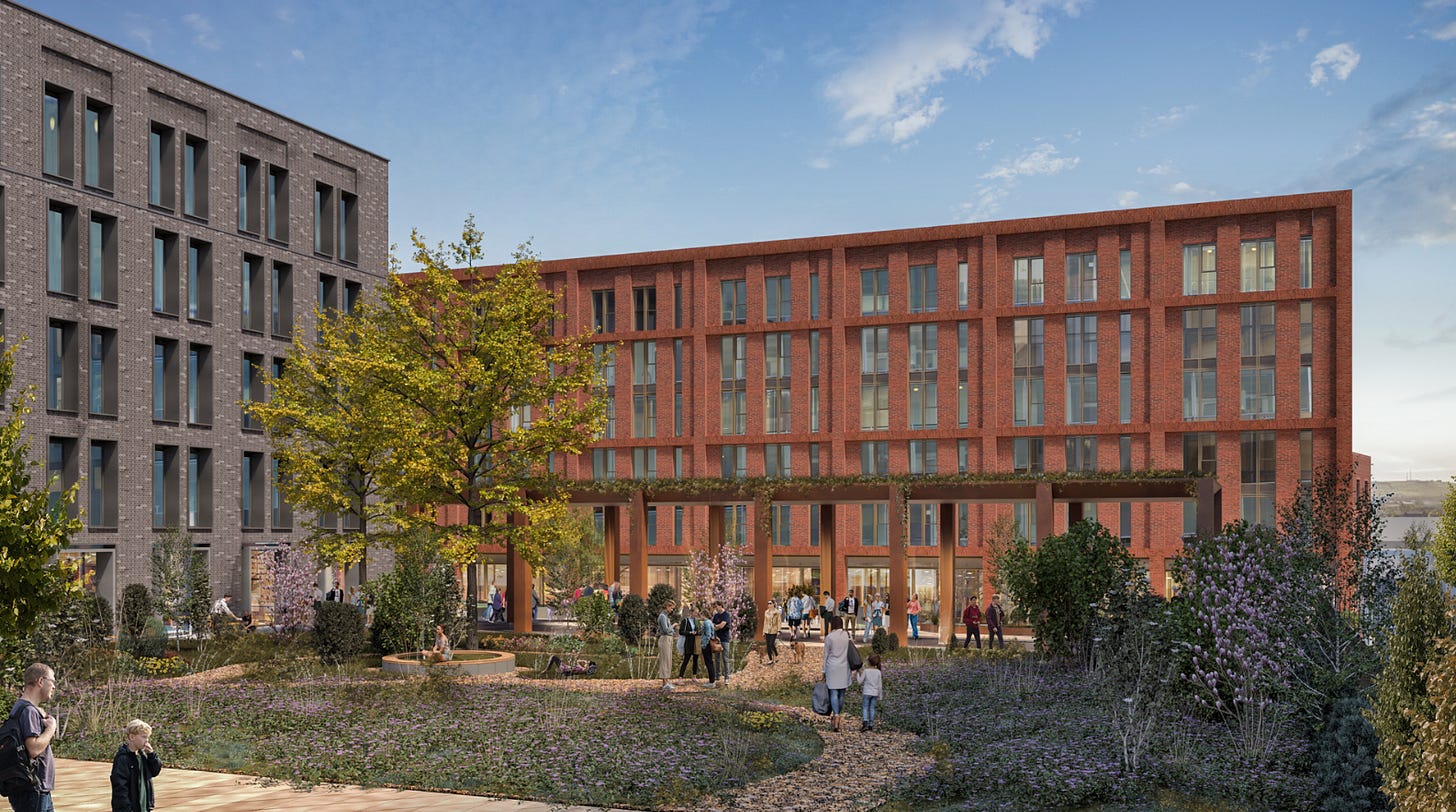
House prices in Stoke rose by 17.2% during 2024, making it the fastest-growing market in the UK for that year, with the average price hitting £227,000 by September 2024. However, these price rises, coupled with sharp hikes in the cost of renting, which are up around 12% on this time last year, are outpacing incomes.
Local residents remain critical because they haven’t seen the redevelopment and regeneration of parts of the city that they were promised. Parts of Hanley are adorned with black fencing that bears signs saying earmarked for redevelopment. The signs have been there for years. In fact, it’s been more than a quarter of a century since a new development was promised for Hanley, replacing its old East-West Precinct. It never materialised.
Wouldn’t it be a no-brainer to convert some of the empty eyesores into affordable homes, starting with Twyford House perhaps? Well, we’ll return to the old sanitary ware factory later in this story. Before you decide that this is yet another story highlighting the decline of Stoke, let me tell you that there is good news, and things are moving in the right direction.
But first, how did we get here? The decline of the pottery industry is well known, but driving around the city, I have always been struck by the sheer scale of what was the global centre of ceramics. Middleport, Tunstall, Burslem all slip past as I regularly travel to various destinations across the six towns, and every so often, another old factory, potbank, and ornately decorated hall or market comes into view, often with a tree growing through the roof, or wire mesh fencing to keep people out.
A city that looks like it’s in decline? Yes. But the overarching question for me was why it has remained like this for so long? In truth, it hasn’t. When compared to cities that have gone through similar transformations such as Birmingham, Bristol, or Manchester, the regeneration didn’t begin for decades after the decline. It doesn’t simply happen overnight.

The ceramics industry only really came to an end towards the end of the last century. An industry that had been the lifeblood of Stoke since the mid to late 1700s. Towards the end of the industry’s life was when my wife’s dad worked in the potteries, but even during the decline, the area was bustling and still very much alive.
But while the workers are long gone, the buildings remain, and so what to do with these hulking historic structures? The ceramic industry has sufficient museums recognising the heritage. We need to bring these areas back to life.
There’s the familiar ‘Broken Window Theory’: visible signs of disorder, like broken windows, graffiti, or litter, encourage more serious crime and antisocial behaviour, and while there may be a lot of business being done in the areas in close proximity to the old potbanks, there are also a lot of broken windows. Regeneration of the buildings, and the areas in which they sit, could transform the feel of an area and bring people in, thus creating a buzz. When people are present in large numbers, the problems that once scourged the area also disappear.
So what’s the hold-up? Thankfully, across the city there are pockets of ambition, and clusters of people in communities willing to work on the future vision of the city, and right now, there is a lot happening. In the middle of writing this piece, out of the blue, Radio Stoke ran a report stating that Hanley Town Hall had been bought by local property developer and charity boss, Simon Edwards.
Originally the Queens Hotel when it opened in 1869, Hanley Town Hall was a wedding venue when it closed in late 2020. Then there’s the Goods Yard and the accompanying building towering over Stoke Station. It’s now complete, shiny and new, and very open. So things are beginning to happen, and in this first instalment, Oliver’s Mill offers a perfect example of what is planned and what could be achieved.
“Let those with connections to the location, and passion, purchase and develop the sites”
Simon Davies, co-founder of the Teapot Factory
Simon Davies is co-founder of CIC the Teapot Factory and part of the team aiming to bring the old flint mill back to life. The location of the mill is full of potential. It sits on the Trent and Mersey canal, a stone’s throw from Festival Park. The ambition is to repurpose the building into a space featuring creative studios for artists, architects, graphic designers, plus a food and drink hub. Simon wants to be able to nurture local talent and independent businesses here, providing affordable spaces – rents will be kept affordable to keep talent there. It could become a centre that hasn’t been created anywhere else in the city.
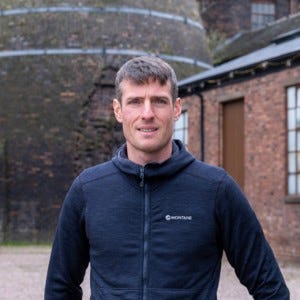
The idea was based loosely on Digbeth in Birmingham, an area that was in decline, but the rebirth of the old Bird’s Custard Factory was just the beginning of re-establishing the area as a creative zone in the city. Then there’s Liverpool’s Baltic Triangle, where many of the Victorian warehouses and factories are now busy co-working spaces, with apartments, small-scale breweries and food hubs at its heart.
Davies admits the transformation isn’t going to happen overnight. A feasibility study costing £15k has just been signed off. After that, it could take four or five years to complete the redevelopment, but in that time they have a ‘Meanwhile Place’ planned, using the outside space to showcase what’s coming to the site. If successful, they can prove the development is viable, which will add clout to the next stage in the grant process.
Davies is conscious that creating a living museum is not the aim. ‘We’re not a big company trying to make big money from regeneration. Any regeneration is good, but we’ve got very clear objectives. And we’re not making a museum, not another reform heritage project. We’ve got what we need to grow organically. We’re creating the vision, and we’re aiming to gain attention.’ Keen to find out more? Oliver's Mill to the public for a free Heritage Open Day on 15/09 from 4pm-6pm (no need to book).
The location of Oliver’s Mill should play a role in its success. Just along the canal from the Bet365 and Vodafone offices, it sits to the north-west of Festival Park. The road to the site is currently closed, but once opened, it will be a thoroughfare linking Burslem and Festival Park. Simon’s main message when considering which sites to redevelop, and how to do so successfully, is this: “Let those with connections to the location and passion purchase and develop the sites. The problem is that the buildings have been bought over the years by people who have had no interest in doing anything with them.”
Which neatly brings me back to Twyford House. It’s routinely described as an eyesore, but what an eyesore! The factory in Etruria grew into a major sanitary ware factory, and in 1939 there were 16 bottle ovens on the site. These were producing ‘fireclay sanitary products under Twyford’s leadership’. In layman’s terms, that’s toilets, sinks, urinals, and other bathroom fixtures.
They were all made from vitrified fireclay, an incredibly durable ceramic material. The historical value of the building is perhaps priceless, but operations began to shift elsewhere. In June 1950, Twyford House shut down, with all work moving to the Wedgwood estate in Barlaston.
The site became home to small local businesses, but following a massive fire in late December 2012, Twyford House was abandoned and remained derelict.
Gideon discloses what happened next. “It was full to the brim, all four storeys, with combustible industrial waste. When I discovered this early on in my time as MP, I wrote to every single government department, including the Prime Minister, and said, ‘You've got to do something about this’. Basically, everybody knew about it, but because of the cost of doing something about it, they did nothing.”
After the 2012 fire, the site became home to A Morrey Distribution Ltd, a company operating under a permitted waste licence. From 2014, the company stored RDF on the site. RDF is a type of fuel made from non-recyclable waste. It’s created by shredding and drying a mix of materials such as plastics, paper, cardboard, wood, and packaging waste. Once dried, RDF becomes highly combustible.
The amount stored inside Twyford House was almost double what was permitted. Over 30,000 tonnes were discovered, tightly packed inside. ‘The fire service used to send drones occasionally to check the temperature, because the thing about combustible waste is that when it's been stored for a while, it can self-ignite. I was horrified.’ Jo Gideon raised her concerns in the Commons, highlighting the site’s proximity to the A500 and the West Coast Mainline.
But the problem is this: the illegal industrial waste industry is extremely lucrative. Profit margins are high. A customer looking to offload waste would pay the waste company money to dispose of it. A single tonne of RDF costs around £80–£120 to properly dispose of. But rather than disposing of the waste, they stockpile it, saving them vast sums of money. So if 30,000 tonnes of waste were discovered in Twyford House, that suggests that as much as £3.6 million has been saved.
In fact, illegal industrial waste is often cited as being more profitable than drug trafficking, plus there’s a lower risk of prosecution. The Environment Agency estimates waste crime – including illegal dumping, export fraud, and mismanaged storage like at Twyford House – costs the economy over £1 billion per year, and a 2021 National Audit Office report described it as “low risk, high reward.” Enforcement is simply unable to keep pace. Despite enforcement notices, the owner repeatedly promised action but never cleared the waste. Finally, in 2020, A Morrey Distribution Ltd was prosecuted.
The director of the company, Philip Eardley, was handed a fine of £1,000 for failing to comply with enforcement notices. He was also ordered to pay £50,000 in prosecution costs and a £33,000 confiscation order under the Proceeds of Crime Act. These funds were directed toward making the site safe. The company entered guilty pleas in court but received no separate financial penalties due to its limited financial status.

“Once the clean-up of Twyford House is complete, discussions between the Environment Agency, Stoke-on-Trent City Council and the site’s owner, Alistair Hilditch-Brown, will begin.”
Gideon says that she then effectively ‘got a blank cheque’, and the environment agency was given the site. “It took the best part of 18 months. The idea was to hand it back to the council to take over the responsibility for the building, which ties in with your question: how do we deal with these buildings?”
“There’s a lot of graffiti on it, and they left the building completely dangerous because of what they've done to get all the waste in. To fill the whole warehouse, they cut holes in the floors so cherry pickers could reach up to store waste in the higher parts of the building.” Gideon believes that ultimately Twyford House will have to be pulled down.
‘There is no alternative. Whoever takes it on now will have to pull it down, which itself is a tragedy. These buildings, they're lovely in their original state. This is a brick-built giant warehouse. But the cost of converting it is huge.” Twyford House remains derelict, and the EA are working on the removal of the hazardous waste.
Once the clean-up is complete, then discussions between the Environment Agency, Stoke-on-Trent City council and the site’s owner, Alistair Hilditch-Brown, will begin. Twyford House sits in what’s known as the Ceramic Valley Enterprise Zone, which is an area that is working to attract new employment-generating enterprises. Until the clean-up is complete, very little can happen.
So far, no plans have emerged, but watch this space over the next few weeks as we explore further the regeneration of Stoke-on-Trent. In the next instalment, Jeff Nash takes us behind safety fences around the Spode works. What is going on there to rejuvenate the internationally famous site is truly transformational.
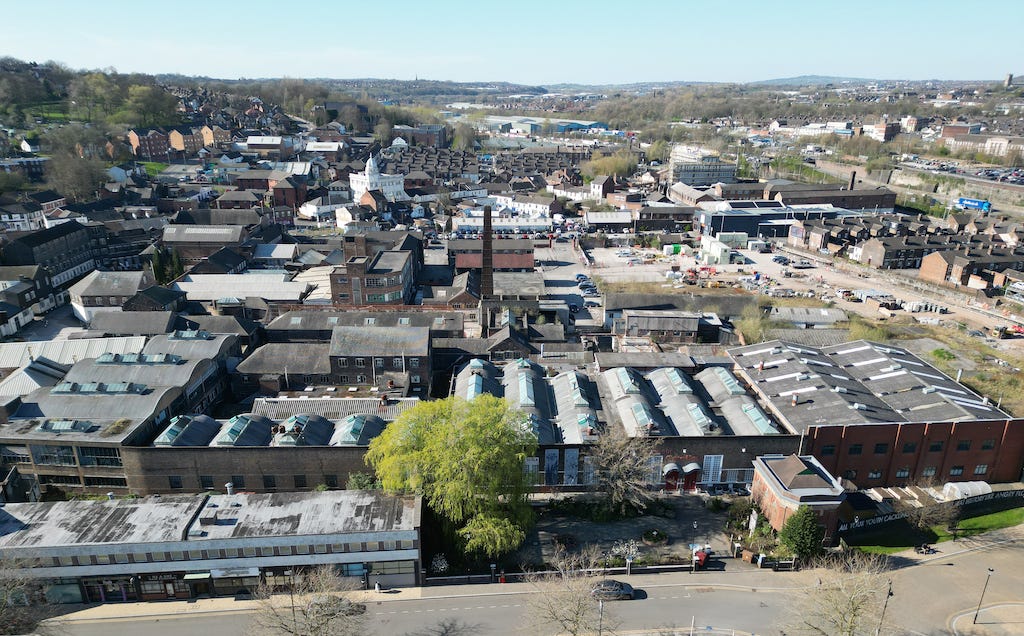
About the author, Martin Poyntz-Roberts
Martin has spent his life behind the scenes for major TV productions at the BBC, spent many years at Radio 4 and latterly making podcasts, notably the multi award-winning The Big Steal on Putin and Russia, and Adopters Anonymous, which addresses the adoption process. He is currently making series 3 of a show called Kill List, with this trio of shows available on all podcast platforms. When not working, you can often find him at Rudyard Lake with his dog, or trudging around the assorted football pitches of Stoke and beyond with his two footy-mad sons.




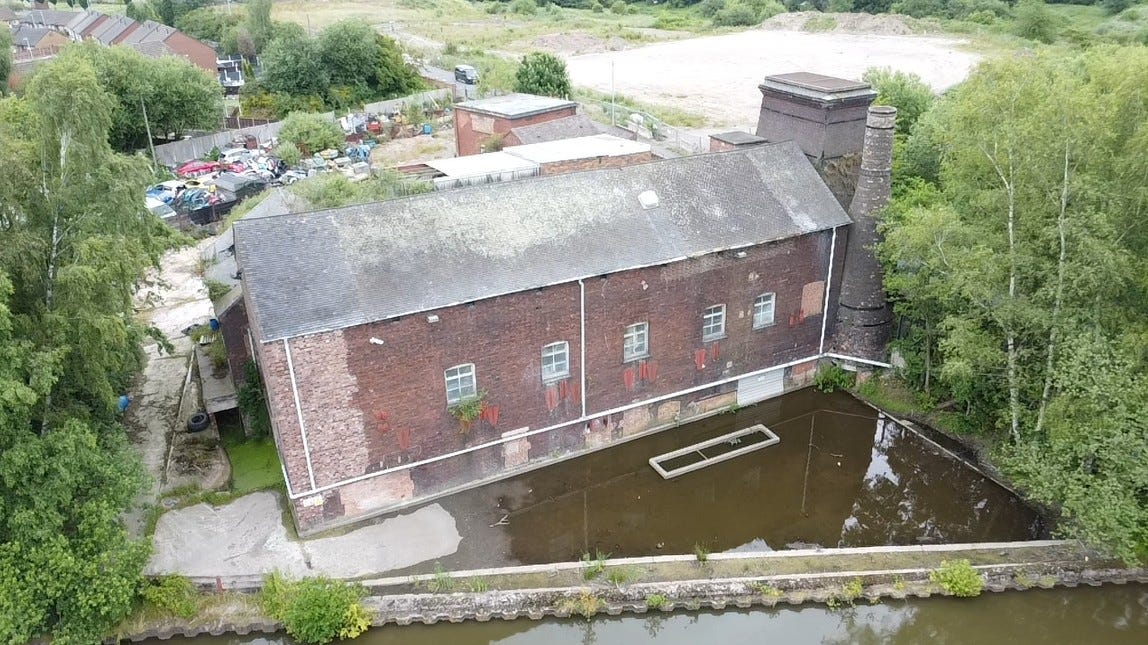
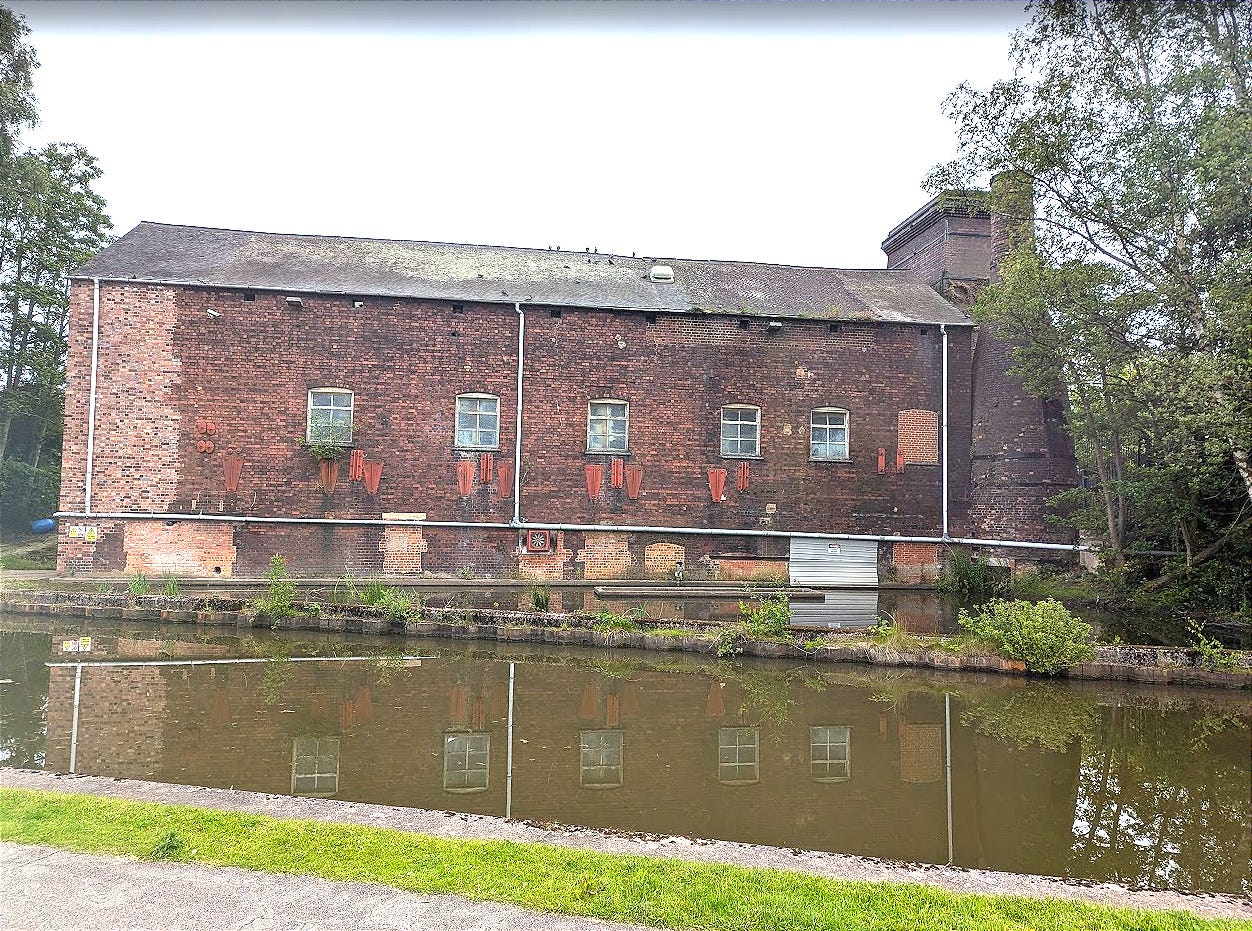

Very interesting read 👍